Thiobenzothiazole-modified Hydrocortisones Display Anti-inflammatory Activity with Reduced Impact on Islet β-Cell Function
- PMID: 25851902
- PMCID: PMC4505588
- DOI: 10.1074/jbc.M114.632190
Thiobenzothiazole-modified Hydrocortisones Display Anti-inflammatory Activity with Reduced Impact on Islet β-Cell Function
Abstract
Glucocorticoids signal through the glucocorticoid receptor (GR) and are administered clinically for a variety of situations, including inflammatory disorders, specific cancers, rheumatoid arthritis, and organ/tissue transplantation. However, glucocorticoid therapy is also associated with additional complications, including steroid-induced diabetes. We hypothesized that modification of the steroid backbone is one strategy to enhance the therapeutic potential of GR activation. Toward this goal, two commercially unavailable, thiobenzothiazole-containing derivatives of hydrocortisone (termed MS4 and MS6) were examined using 832/13 rat insulinoma cells as well as rodent and human islets. We found that MS4 had transrepression properties but lacked transactivation ability, whereas MS6 retained both transactivation and transrepression activities. In addition, MS4 and MS6 both displayed anti-inflammatory activity. Furthermore, MS4 displayed reduced impact on islet β-cell function in both rodent and human islets. Similar to dexamethasone, MS6 promoted adipocyte development in vitro, whereas MS4 did not. Moreover, neither MS4 nor MS6 activated the Pck1 (Pepck) gene in primary rat hepatocytes. We conclude that modification of the functional groups attached to the D-ring of the hydrocortisone steroid molecule produces compounds with altered structure-function GR agonist activity with decreased impact on insulin secretion and reduced adipogenic potential but with preservation of anti-inflammatory activity.
Keywords: adipogenesis; chemokine; glucocorticoid; inflammation; insulin secretion.
© 2015 by The American Society for Biochemistry and Molecular Biology, Inc.
Figures


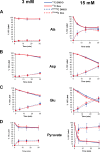
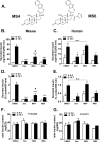
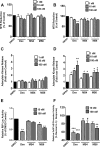
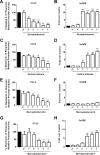
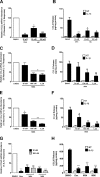

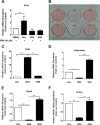
Similar articles
-
Resolvin E1 reduces proinflammatory markers in human pancreatic islets in vitro.Exp Clin Endocrinol Diabetes. 2010 Apr;118(4):237-44. doi: 10.1055/s-0029-1241825. Epub 2010 Jan 29. Exp Clin Endocrinol Diabetes. 2010. PMID: 20119897
-
Ginsenoside Rh1 potentiates dexamethasone's anti-inflammatory effects for chronic inflammatory disease by reversing dexamethasone-induced resistance.Arthritis Res Ther. 2014 May 1;16(3):R106. doi: 10.1186/ar4556. Arthritis Res Ther. 2014. PMID: 24887434 Free PMC article.
-
Essential phospholipids prevent islet damage induced by proinflammatory cytokines and hypoxic conditions.Diabetes Metab Res Rev. 2016 Mar;32(3):268-77. doi: 10.1002/dmrr.2714. Epub 2015 Oct 28. Diabetes Metab Res Rev. 2016. PMID: 26378630
-
Hes3 is expressed in the adult pancreatic islet and regulates gene expression, cell growth, and insulin release.J Biol Chem. 2014 Dec 19;289(51):35503-16. doi: 10.1074/jbc.M114.590687. Epub 2014 Nov 4. J Biol Chem. 2014. PMID: 25371201 Free PMC article.
-
The islet estrogen receptor-α is induced by hyperglycemia and protects against oxidative stress-induced insulin-deficient diabetes.PLoS One. 2014 Feb 3;9(2):e87941. doi: 10.1371/journal.pone.0087941. eCollection 2014. PLoS One. 2014. PMID: 24498408 Free PMC article.
Cited by
-
Channel Expansion in the Ligand-Binding Domain of the Glucocorticoid Receptor Contributes to the Activity of Highly Potent Glucocorticoid Analogues.Molecules. 2024 Mar 29;29(7):1546. doi: 10.3390/molecules29071546. Molecules. 2024. PMID: 38611825 Free PMC article.
-
Stereoisomers of an Aryl Pyrazole Glucocorticoid Receptor Agonist Scaffold Elicit Differing Anti-inflammatory Responses.ACS Med Chem Lett. 2022 Aug 22;13(9):1493-1499. doi: 10.1021/acsmedchemlett.2c00299. eCollection 2022 Sep 8. ACS Med Chem Lett. 2022. PMID: 36105346 Free PMC article.
-
Transcriptional regulation of chemokine genes: a link to pancreatic islet inflammation?Biomolecules. 2015 May 26;5(2):1020-34. doi: 10.3390/biom5021020. Biomolecules. 2015. PMID: 26018641 Free PMC article. Review.
-
Potent Anti-Inflammatory, Arylpyrazole-Based Glucocorticoid Receptor Agonists That Do Not Impair Insulin Secretion.ACS Med Chem Lett. 2021 Sep 15;12(10):1568-1577. doi: 10.1021/acsmedchemlett.1c00379. eCollection 2021 Oct 14. ACS Med Chem Lett. 2021. PMID: 34676039 Free PMC article.
-
The Ubiquitin Ligase SIAH2 Negatively Regulates Glucocorticoid Receptor Activity and Abundance.Biomedicines. 2020 Dec 30;9(1):22. doi: 10.3390/biomedicines9010022. Biomedicines. 2020. PMID: 33396678 Free PMC article.
References
-
- Schäcke H., Döcke W. D., Asadullah K. (2002) Mechanisms involved in the side effects of glucocorticoids. Pharmacol. Ther. 96, 23–43 - PubMed
-
- van Raalte D. H., Diamant M. (2014) Steroid diabetes: from mechanism to treatment? Neth. J. Med. 72, 62–72 - PubMed
-
- Blondeau B., Sahly I., Massouridès E., Singh-Estivalet A., Valtat B., Dorchene D., Jaisser F., Bréant B., Tronche F. (2012) Novel transgenic mice for inducible gene overexpression in pancreatic cells define glucocorticoid receptor-mediated regulations of beta cells. PLoS One 7, e30210. - PMC - PubMed
Publication types
MeSH terms
Substances
Grants and funding
- P30 DK072476/DK/NIDDK NIH HHS/United States
- 1P30-DK072476/DK/NIDDK NIH HHS/United States
- R44 GM099207/GM/NIGMS NIH HHS/United States
- U01 DK089572/DK/NIDDK NIH HHS/United States
- R01 DK103860/DK/NIDDK NIH HHS/United States
- R44-GM099207/GM/NIGMS NIH HHS/United States
- P30 DK020593/DK/NIDDK NIH HHS/United States
- R01-DK103860/DK/NIDDK NIH HHS/United States
- P20 GM103528/GM/NIGMS NIH HHS/United States
- P20-GM103528/GM/NIGMS NIH HHS/United States
- R01 DK097829/DK/NIDDK NIH HHS/United States
- 8 P20-GM103528/GM/NIGMS NIH HHS/United States
LinkOut - more resources
Full Text Sources
Medical

